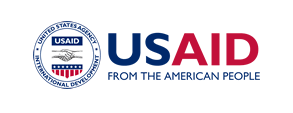The Health Policy Project ended in 2016. Work continued under Health Policy Plus (HP+) until 2022.
NEWS & VIEWS
_news.jpg)
Photo by Moving Mountains Trust
NAIROBI, Kenya—A new report, Catastrophic Health Expenditures and Impoverishment in Kenya, shows that healthcare costs push millions of Kenyans below the poverty line each year and further impoverish many more. Catastrophic health expenditures refer to healthcare spending that is high relative to a household’s budget or its capacity to pay. These costs can be financially disastrous, especially for poor households, and annually push an additional 1.48 million Kenyans into poverty (see Healthcare Financing Options for Kenya: FY 2013/14–2029/30).
Health economists from the USAID- and PEPFAR-funded Health Policy Project (HPP) and the University of Nairobi used a variety of methods to analyze data on catastrophic expenditures from surveys conducted in 2003 and 2007 on Kenyan households’ health expenditures and utilization. They found that, among households that used healthcare services, the percentage of health expenditures considered catastrophic rose between 2003 (10.3%) and 2007 (11.1%). As a result, nearly one-twentieth of households (3.5% in 2003 and 4.0% in 2007) became impoverished. While new data from the latest household survey (to be released later this year) indicate a drop in catastrophic spending (6.2% in 2013), the poor bore a disproportionate burden of these expenditures and thousands of Kenyan households were still pushed into poverty as a result of health-related expenses.
“The poor are the most affected by catastrophic health expenditures due to a lack of sufficient financial protection,” commented Thomas Maina, senior health finance advisor for HPP/Kenya, one of the authors of the report.
Based on the study’s findings, the authors call on the Kenyan government to focus on the long-term health financing strategies needed to address the burden of catastrophic health expenditures and, more so, to reform its social health insurance scheme, the National Hospital Insurance Fund (NHIF). This reform would expand the NHIF’s coverage and benefits package, ensuring better protection for the poor and vulnerable. Current initiatives on free maternal healthcare and the abolition of user fees at primary-level facilities will, however, go a long way toward reducing catastrophic health expenditures in the short term.
What's New
- Something to Build On: “Innovation Exchange” Celebrates the Health Policy Project’s Close and a New Beginning
- What Will it Take for Tanzania to Achieve ART Targets and Ensure Long-Term Sustainability of the HIV Response?
- Helping Kenya’s County Leaders Advocate for Increased Health Investments
- HPP Holds Working Meeting on Ensuring Responsible PEPFAR Transitions for Key Populations
- Health Policy Project Celebrates 2016 International Women's Day
- HPP Staff Participate in White House Conference on HIV Stigma Reduction

